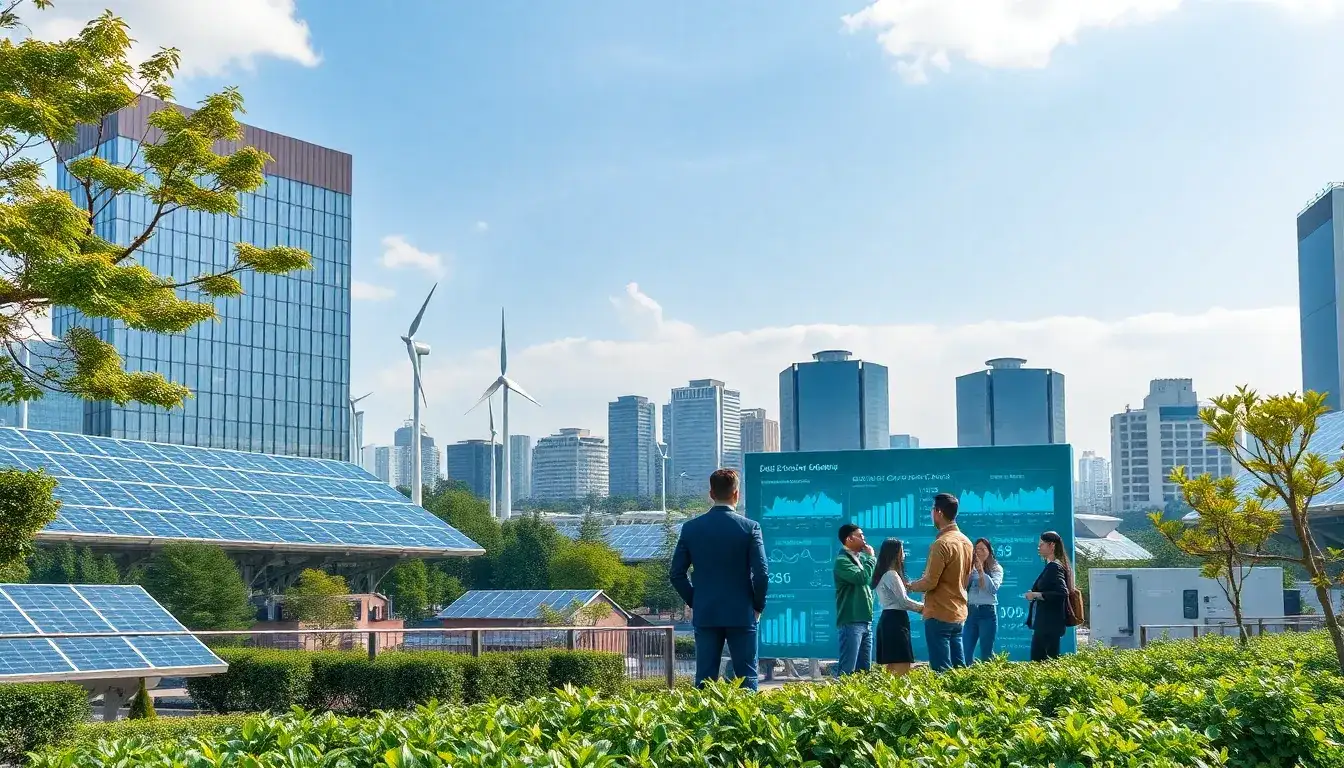
Challenges in Integrated Transformation of “Source-Grid-Load-Storage” in Henan? Ankerui’s Microgrid Smart Energy Platform Provides Solutions
Updated: April 1, 2025 | Views: 24
1. Policy Support
The notification for soliciting opinions on the “Implementation Plan for High-Quality Development of Distribution Networks in Henan Province (2024-2027)” outlines the direction for distribution network construction and renovation over the next four years. The core of the plan focuses on enhancing the supply capacity, disaster resilience, and load-bearing capacity of the distribution network. It explicitly identifies priority tasks under the “Four Batches” of construction and renovation, which will significantly impact the future development of solar energy and storage integration.
Henan has introduced policies such as “Dedicated Green Power Transformers and Dedicated Green Power Lines” to explore concepts like “Wall-Selling Electricity” and independent operations of microgrids. These policies allow third-party investments in distributed solar power systems that can sell electricity directly to consumers. While this model could lower the barriers to developing solar projects, it also necessitates careful consideration of electricity pricing and the complexities of grid coordination. This plan provides a clear growth path for the solar energy and storage charging station industry, although it also raises higher demands for technology, cost, and policy adaptability. Over the next four years, Henan may become a model for the coordinated development of distributed solar and storage, offering valuable insights for other provinces.
2. Opportunities and Challenges in Henan’s Energy Transition
As a major economic and populous province in central China, Henan faces the dual tasks of energy structure adjustment and green development. On one hand, there is a high dependency on traditional energy sources and insufficient flexibility in the power system. On the other hand, Henan possesses significant potential in new energy fields, such as wind and solar power, with renewable energy installations surpassing 40% in 2023.
In this context, Henan has been designated as a national pilot province for “Source-Grid-Load-Storage Integration,” aimed at creating a clean, low-carbon, safe, and efficient modern energy system by integrating power generation, grid, load, and storage resources. However, achieving this goal comes with multiple challenges: the volatility of new energy generation puts pressure on grid stability; the ability to adjust industrial loads is insufficient; and the efficiency of coordination between storage facilities and the grid needs improvement. Addressing these challenges through technological innovation and management optimization is critical for Henan’s energy transition.
3. Solutions
The smart energy management platform is an integrated system utilizing modern information technologies such as the Internet of Things (IoT), big data, cloud computing, and artificial intelligence (AI) to monitor, control, and optimize energy usage to improve efficiency and reduce waste.
Ankerui’s microgrid system solution involves installing a range of self-developed monitoring, analysis, protection, and governance devices at key nodes of sources, grids, loads, storage, and charging within enterprises. By leveraging advanced control, measurement, and communication technologies, the system aggregates distributed power sources, storage systems, controllable loads, electric vehicles, and energy routers. The platform dynamically adjusts microgrid control strategies based on the latest grid prices, power load, and grid dispatch instructions, ensuring that the enterprise microgrid operates safely, reliably, efficiently, economically, and with low carbon emissions.
3.1 Accurately Aligning with Policy Goals
Complete deployment of distribution automation is achieved using Ankerui’s Coordinated Control Unit (ACCU-100) and smart terminal devices (such as AMSSE-IS anti-backflow devices and APView power quality monitoring devices). This allows for dynamic awareness of distribution network areas in Henan and plug-and-play integration of distributed power sources, supporting high penetration of solar/wind energy in rural regions and meeting the policy requirement for a “100% coverage rate of distribution automation.”
Rapid fault response capabilities are enhanced through built-in fault arc detection (AAFD) and real-time line temperature analysis features, combined with edge computing terminals, shortening power restoration times to “urban areas ≤ 1 hour, rural areas ≤ 2 hours,” significantly improving power supply reliability.
The integration of renewable energy at high ratios involves prioritizing solar energy supply to loads, charging storage when loads cannot be met, and feeding excess storage back to the grid or limiting power when necessary. When solar production is insufficient, storage will be used first, followed by grid power as needed.
Dynamic capacity enhancement technology utilizes Ankerui’s dynamic capacity model to quickly respond to load fluctuations through storage systems (e.g., Acrel-2000ES). When short-term power demand exceeds transformer capacity, storage discharges quickly to meet load requirements, improving the capacity of distributed power sources by 70% (surpassing the policy goal of 50%) and alleviating seasonal power imbalances.
Anti-backflow and absorption strategies are deployed in high-penetration solar areas, utilizing anti-backflow protection devices and coordinated control strategies to prioritize local consumption of renewable energy and prevent power from being fed back into the grid, thus reducing assessment risks associated with backfeeding.
Flexible control for charging stations is implemented in densely populated areas like Zhengzhou and Luoyang, using an orderly charging control system that dynamically schedules charging power based on transformer load rates and time-of-use electricity prices, cutting peak loads by 30% and adapting to the policy scenario of “charging station penetration rate exceeding 25%.”
The platform aggregates resources such as industrial park storage and flexible air conditioning loads to participate in Henan’s electricity ancillary service market, enabling minute-level demand response and capturing peak and off-peak arbitrage benefits. This leverages the flexible resource capabilities of microgrids to ensure the continued value appreciation of energy assets and optimize overall revenue.
Carbon emissions are precisely measured through an integrated carbon management module, generating monthly and annual carbon audit reports that connect to Henan’s carbon trading platform, facilitating the transition from “energy consumption dual control” to “carbon emission dual control.”
Conclusion
Through these solutions, Ankerui’s microgrid smart energy platform can deeply integrate with the upgrading of Henan’s distribution network and energy transition, supporting the achievement of high-quality development goals centered on “strong grids, flexible loads, and intelligent control.”







